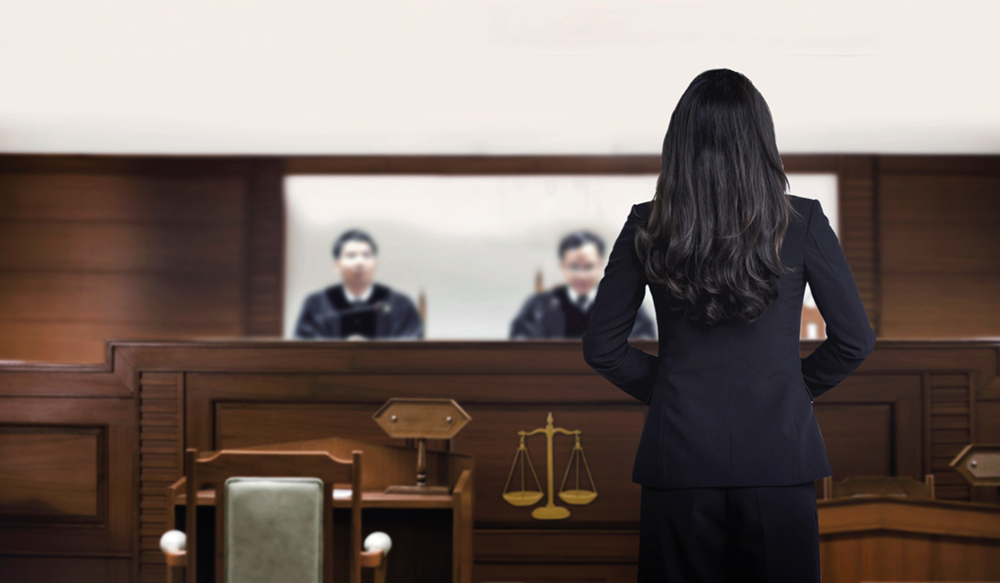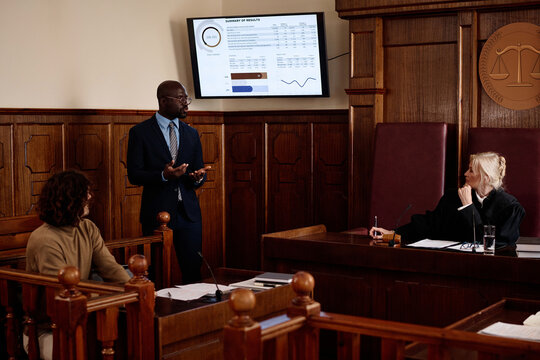Browsing the Complexities of Test Presentations: Tips for Seamless Delivery and Engaging Disagreements
In the realm of legal procedures, the art of test discussion stands as a critical determinant of success. The complexities fundamental in test discussions need a fragile equilibrium of skill, approach, and ability.

Understanding Trial Goals
To properly browse a trial, it is essential to have a clear understanding of the goals that require to be accomplished. Before stepping right into the court, lawful groups have to specify their objectives and desired outcomes. These goals work as assisting concepts throughout the test, forming approaches and affecting decision-making procedures.
Understanding trial objectives involves an extensive analysis of the case, legal precedents, and the client's benefits. Trial Presentations. It requires a precise evaluation of the facts, identifying key issues, and anticipating potential challenges. By establishing quantifiable and certain goals, attorneys can tailor their debates and discussions to line up with the desired results
In addition, a clear grip of test objectives enables lawful groups to prioritize evidence, witnesses, and lawful disagreements successfully. It allows for the development of a systematic story that resonates with the court and court, enhancing the overall instance presentation.

Organizing Evidence Properly
Having a clear understanding of test goals lays the foundation for arranging evidence properly in legal process. By lining up the discussion of evidence with the wanted results of the test, legal groups can enhance their debates and improve their persuasiveness.
Another crucial element in arranging proof efficiently is developing a rational circulation. Presenting evidence in a sequential and systematic manner can assist build a compelling story that supports the legal debates being made. Additionally, utilizing aesthetic aids such as graphs, graphes, or timelines can better enhance the company of proof and assist in clearing up intricate relationships or sequences of events.
In addition, ensuring that all evidence provided is relevant and acceptable to the instance is essential. Unimportant or inadmissible proof can take away from the toughness of the debate and potentially harm the trustworthiness of the offering event. Therefore, a meticulous evaluation and choice process must be embarked on to consist of just one of the most impactful and legally audio proof in the trial discussion.
Crafting Influential Stories
Crafting engaging narratives plays a pivotal duty in presenting influential disagreements throughout legal proceedings. When building a narrative for a test you can try here presentation, it is necessary to establish a clear story that highlights key factors and connects them in a systematic manner. By weaving with each other evidence, statement, and lawful disagreements right into a persuasive and natural story, legal specialists can successfully advocate for their clients and raise the possibility of a desirable result in you can try these out the court room.
Mastering Visual Help
Effective use aesthetic help is essential to improving the influence and clarity of trial discussions. Aesthetic aids, when used purposefully, have the power to streamline complex info, enhance bottom lines, and leave an enduring impact on the discretionary. To master visual help in test discussions, it is crucial to guarantee that they are clear, succinct, and appropriate to the arguments being made.
When integrating visual aids, such as graphes, charts, pictures, or timelines, into a trial presentation, it is necessary to maintain them aesthetically appealing yet professional. The visuals need to enhance the spoken disagreements, supplying a graph of the information being gone over without overwhelming the audience with unnecessary information.
Furthermore, exercising with the aesthetic aids beforehand is necessary to make sure a smooth shipment throughout the trial. Acquainting oneself with the web content, changes, and timings of each aesthetic aid can help maintain the circulation of the presentation and prevent technical problems that might develop.
Supplying Impactful Closing Arguments
A compelling closing argument works as the end result of a test presentation, enveloping the core narrative and persuading the court and court in the direction of a favorable choice. To deliver an impactful visit the site closing disagreement, it is crucial to succinctly recap bottom lines, highlight the staminas of your case, and deal with any kind of weaknesses in a strategic way. Begin by laying out the major arguments that sustain your customer's position, highlighting why the proof presented throughout the trial sustains your story. It is vital to create a feeling of cohesion and clearness, leading the court and jury towards the desired verdict.
In addition, integrating psychological appeal can better strengthen your closing debate. Ultimately, a well-crafted closing argument need to leave a long lasting impression, compelling the judge and jury to rule in your customer's favor.
Verdict
Finally, mastering trial presentations includes comprehending goals, organizing evidence, crafting stories, using aesthetic help, and delivering impactful closing debates. By applying these approaches effectively, legal representatives can present their case effortlessly and make engaging debates in the court. It is essential to navigate the complexities of test presentations with accuracy and ability to achieve success in lawful process.
By lining up the presentation of proof with the wanted end results of the trial, lawful groups can strengthen their disagreements and enhance their persuasiveness (Trial Presentations). To grasp visual aids in test discussions, it is essential to ensure that they are clear, succinct, and appropriate to the arguments being made
An engaging closing debate serves as the conclusion of a trial discussion, enveloping the core narrative and convincing the court and jury towards a favorable decision. Begin by describing the primary arguments that sustain your client's position, emphasizing why the proof offered throughout the trial sustains your narrative.In final thought, grasping trial discussions includes recognizing goals, organizing evidence, crafting stories, using aesthetic aids, and delivering impactful closing arguments.